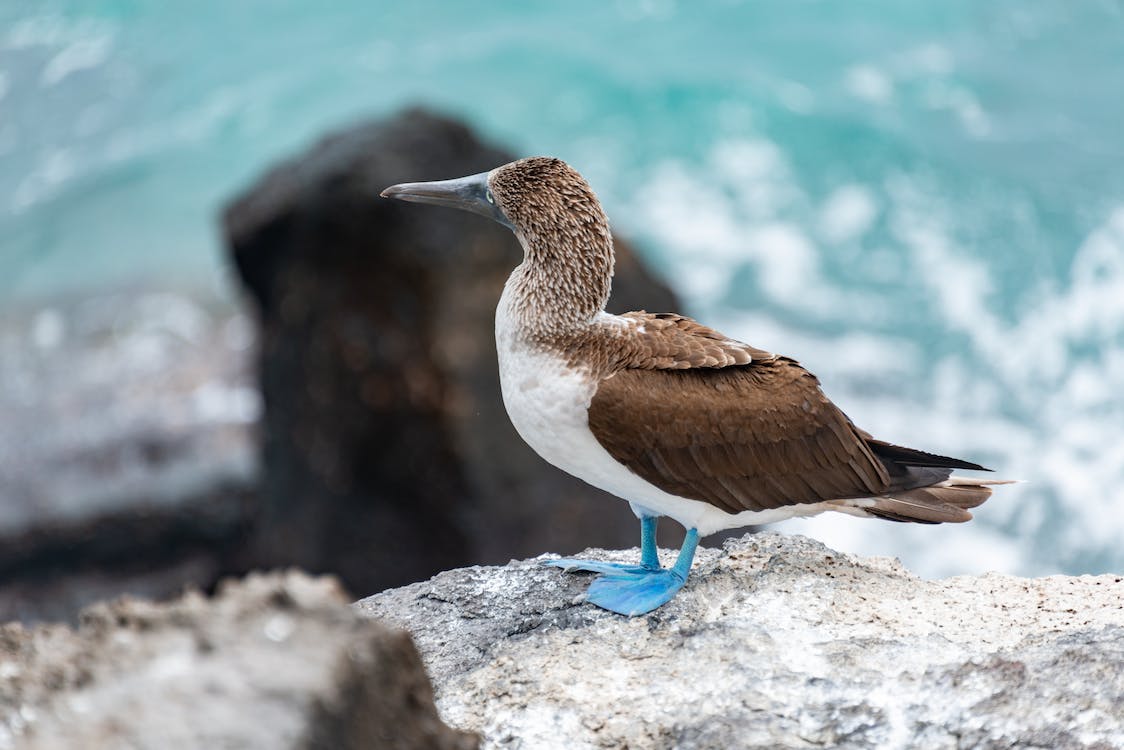The Cape Gannet, also known as Morus capensis or “mad goose,” is a large seabird categorized under the Sulidae family. This large bird is easily recognizable due to its size and black and white plumage. This bird’s awkward waddle and weird take-off for flight are just some of their cute, admirable traits.
This bird species was first described in 1823 by Martin Hinrich Carl Lichtenstein, a German naturalist and explorer.
The name “gannet” is synonymous with gluttony. However, the lack of food is one of the main reasons why their population is in a constant decline. It was just in 2017 when the International Union for Conservation of Nature (IUCN) Red List re-categorized the Cape Gannets from Vulnerable to Endangered due to lack of food, limited breeding range, persecution and exploitation, and continued decline in habitat quality. Aside from these factors, Cape Gannets are constantly hunted by humans and great white pelicans, especially during the breeding season, during which they form large colonies.
Cape Gannet’s population has decreased by more than half between 1956 and 2015. Back in 1993, an average of 5,000 Cape Gannets were killed due to oil spill. Local government and organizations are now working hand-in-hand to preserve the remaining number of Cape Gannets in Namibia and South Africa.
Its seven levels of scientific classification are as follows:
Kingdom: Animalia
Phylum: Chordata
Class: Aves
Order: Suliformes
Family: Sulidae
Genus: Morus
Species: M. capensis
The physical characteristics of a Cape Gannet
A Cape Gannet is a large seabird, measuring from 85 to 94 cm and weighing around 2600 grams. Both male and female Cape Gannets share similar physical characteristics. It has a robust body, strong, webbed feet, and a long bill. It has a black and white plumage. Its head, chin, and neck are yellow. The tail, primary feathers, and secondary wing feathers are black. It has a dark gular stripe on the throat, which appears unusually longer than other Morus bird species.
Its legs and webbed feet are black, while the bill is yellow with black streaks. Meanwhile, juveniles have brown plumage that turns white as they mature. Frequently, the juveniles are confused with Masked Boobies—seabirds that have white heads.
The distribution and habitat of Cape Gannets
Cape Gannets are commonly found in the coastal areas of sub-Saharan Africa, the Gulf of Guinea on the west coast to the countries of South Africa and Mozambique, and Namibia, particularly in Lambert’s Bay, Algoa Bay, Malgas, Mercury, Ichaboe Island, and Possessions Island in Namibia.
These birds frequent coastal and offshore waters that are usually less than 120 kilometers from land. Cape Gannets breed in sloping, offshore islands.
The behavior of Cape Gannets
These seabirds are social and sedentary in nature. Most adult Cape Gannets do not migrate and stay in the same area, while some wander over 3000 km outside the breeding season. These seabirds are most active during the day.
During the breeding season, male and female Cape Gannets perform ritualized displays to attract each other and form a strong bond. These birds usually mate for life—pairs will reunite and mate at breeding colonies every year. Sometimes, pairs will meet a few months before the egg-laying season.
The breeding season takes place from September to April. They form large colonies in open areas on offshore lands or flats, and sometimes on cliffs or human structures like guano platforms. A female Cape Gannet lays one to two eggs on the bare ground. These eggs will be incubated for 44 days before they hatch. The chicks will fledge at 97 days old. They can breed once they reach 3 or 4 years old.
Unlike other gannets and boobies, these birds are usually silent, except when they form breeding colonies, they make loud sounds like “arrah arrah.”
The diet of a Cape Gannet
Since Cape Gannets live near water bodies, they forage on the continental shelf for different kinds of fish. They enter pelagic waters to hunt for fish as well. Their diet comprises of various fish likes pilchard, anchovies, saury, mackerel, and maasbanker.
A Cape Gannet catches a fish by plunge-diving to the water from 20 meters high. It also follows commercial fishing ships to catch discarded fish, offal, and other sea creatures in nets.
BOTSWANA BIRDS | SOUTH AFRICA BIRDS
NAMIBIA BIRDS | ZAMBIA BIRDS | ZIMBABWE BIRDS
